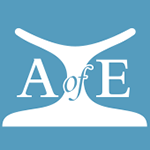James Edward Quibell
British Egyptologist; he was born in Newport, Shropshire,11 Nov. 1867, son of John Q. and Catherine Susannah Smith; he graduated at Christ Church, Oxford, after which he assisted Petrie on a number of his excavations; he was at Coptos, 1893, a site which first opened up the history of Egypt as far back as the First Dynasty, and the following year went to Naqada and Ballas which produced the first and probably the greatest collection of predynastic material ever discovered and also revealed new vistas in the story of Egypt; Quibell is said to have been the first person to recognize, although not publicly to state, that the remains found at Ballas were predynastic, not New Race of the First Intermediate Period; thorough training under Petrie had made him the best-equipped excavator of early sites at that time, and he next excavated the town and area of Hierakonpolis for the ERA with results which are famous in the annals of Egyptian archaeology; with Green and Somers Clarke he discovered the ‘Main Deposit’ containing the Narmer palette, many carved mace-heads and ivories and other important proto-dynastic objects, and in the remains of an early temple the archaic statuettes of King Khasekhem etc.; he cleared the area of the Ramesseum, a very different kind of work, finding important Middle Kingdom papyri and a wealth of inscribed material such as jar sealings; he was appointed to the staff of the Antiquities Service and worked on the Cairo Cat. 1899, becoming Inspector in Chief of Antiquities in the Delta and Middle Egypt, 1899-1904 and Luxor 1904-5; at Luxor he discovered the tomb of Yuia and Tuiu, 1905; on becoming Chief Inspector at Saqqara in 1905 he excavated the magnificent monastery of St. Jeremias, many archaic mastabas, and a very great quantity of Early Dynastic cemetery material, notably the tomb of Hesire; this work went on for many years and gained the Egyptian Museum, Cairo a wealth of fine objects of all periods; in all this work he was assisted by his very able wife, Annie A. Quibell who made copies in outline and colour for his publications; from 1 Jan. 1914 to 1923 he served as Keeper of the Egyptian Museum and during this time greatly improved its decoration and installation; he was appointed Secretary-General of the Antiquities Dept., 1923 and retired, 1 April 1925; in fact he continued to work and carried out further excavations at first as assistant to Firth who had succeeded him at Saqqara, then after 1931 as director on the Step Pyramid site; this was his largest excavation although not the one which is best known, and involved the recovery and restoration of an immense number of objects; Quibell continued the work of Petrie successfully and refined it, improving the standard of publications throughout his career; he contributed to or else wrote no fewer than 18 quarto vols. in all; Naqada, with W. M. F. Petrie, 1895; Ballas, with chapters by W. M. F. P., 1896; El Kab, with Somers Clarke and J. J. Tylor, 1898; The Ramesseum, with W. Spiegelberg, 1898; Hierakonpolis, 2 vols., with W. M. F. P. and F. W. Green, 1900-2; Archaic Objects, 2 vols., Cairo Cat., 1904-5; The Tomb of Yuaa and Thuiu, Cairo Cat., 1908; Excavations at Saqqara, (1905-6), (1906-7) with a section of religious texts by P. Lacau, (1907-8) and other sections by Sir Herbert Thompson and W. Spiegelberg, 3 vols. 1908-9; The Monastery of Apa Jeremias: the Coptic inscriptions edited by Sir Herbert Thompson, 2 vols. 1912; Excavations at Saqqara 1911-12. The Tomb of Hesy, 1913; Excavations at Saqqara 1912-14. Archaic Mastabas, 1923; Teti Pyramid, north side, with A. G. K. Hayter, 1927; The Step Pyramid, with C. M. Firth and J. P. Lauer, 2 vols. 1935; part of his archive passed to Varille (q.v.) and then to the Università degli Studi in Milan; he died in Hertford, 5 June 1935.
| Excavations | Excavation Role |
|---|---|
| 1895-96 West Thebes (inc. Ramesseum) | Archaeologist |
